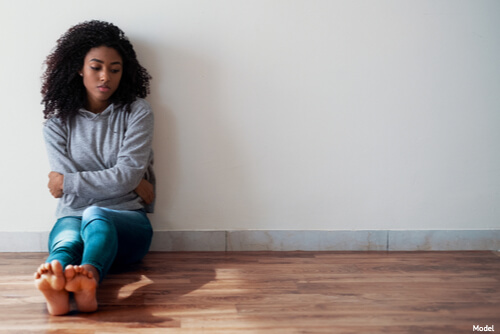The statistics on fibroids are rather astounding. Six out of 10 women and a staggering nine out of 10 women of African descent are expected to develop fibroids by age 50. Uterine fibroids are non-cancerous growths of the uterus, and luckily, they are not associated with an increased risk of uterine cancer or other illness. However, fibroids can greatly impair a woman’s quality of life, causing painful, heavy periods, cramping and lower back pain. Though the exact cause of fibroids remains unclear, experts know that genetics, family history and obesity all play a role in risk. If your mother had fibroids, you are three times more likely to develop them than a person whose mother did not have fibroids.

While the staggering rate of fibroids among women, and Black women in particular, isn’t news, we think it should be. Any health condition that affects/impairs such a high percentage of the population deserves widespread recognition, extensive research and effective treatments.
So far, the only permanent solution for fibroids is surgical removal of the uterus, known as a hysterectomy. In fact, fibroids are the leading cause of hysterectomies in the country, and Black women have had more hysterectomies than women of any other race. It’s estimated that more than a third of all women have had a hysterectomy by age 60, according to the National Women’s Health Network (NWHN).
While hysterectomies can be a life-saving surgery for uterine cancer and other illnesses, it’s nevertheless a drastic procedure with long-term health implications. A hysterectomy before age 40 can raise your risk for heart disease, menopause and urinary tract infections, to name just a few concerns. The important point to remember about fibroids is that less drastic treatment options are available, and it’s vital to fully explore all your treatment options.
Having dedicated my career to women’s health, I’m passionate about helping women achieve optimal urogynecologic health, comfort and vitality, and this pursuit has led me to embrace a wide range of treatment options that help women live a higher quality of life. My dedicated staff and I work diligently to help you achieve your goals with the most comfort and ease, which could mean exploring non-surgical treatments like hormones as a first step. For some women, for example, birth control pills help manage fibroid symptoms by helping to regulate and reduce menstrual flow. Another hormonal option is the medication leuprolide acetate, which induces a temporary menopausal state. This medicine is not a long-term option, but it essentially gives a woman a break from having heavy periods and allows the fibroids to shrink.
We’re excited to report a new hormonal treatment option for fibroids! Just this June, the FDA approved Oriahnn for heavy, fibroid-related bleeding; it’s a combination of estrogen, progestin and the hormone elagolix.
In addition to hormones, or if hormones are not working, we may perform other procedures, including :
- Uterine artery embolization, which injects small particles into the arteries supplying the uterus, cutting off blood flow to the fibroids and causing them to shrink and disappear.
- Endometrial ablation, which uses a laser to resurface the lining of the uterus.
- Myolysis, which uses a laser to destroy uterine muscle tissue.
- Myomectomy, which surgically removes fibroids while keeping the uterus intact.
The important thing to remember is that you have several options, and we are here to help you find just the right course of treatment for you! To learn more about fibroids or to ask questions, please call 303-322-0500 or fill out our consultation request form online today!




